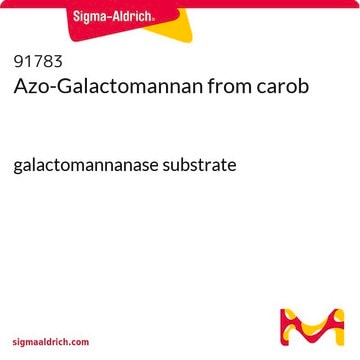A4036
Adenosine
suitable for cell culture, BioReagent
Synonym(s):
9-β-D-Ribofuranosyladenine, Adenine riboside, Adenine-9-β-D-ribofuranoside
About This Item
Recommended Products
biological source
synthetic (organic)
product line
BioReagent
Assay
≥99% (HPLC)
form
powder
technique(s)
cell culture | mammalian: suitable
mp
234-236 °C (lit.)
solubility
1 M NH4OH: 50 mg/mL, clear, colorless
storage temp.
2-8°C
SMILES string
Nc1ncnc2n(cnc12)[C@@H]3O[C@H](CO)[C@@H](O)[C@H]3O
InChI
1S/C10H13N5O4/c11-8-5-9(13-2-12-8)15(3-14-5)10-7(18)6(17)4(1-16)19-10/h2-4,6-7,10,16-18H,1H2,(H2,11,12,13)/t4-,6-,7-,10-/m1/s1
InChI key
OIRDTQYFTABQOQ-KQYNXXCUSA-N
Gene Information
human ... ADA(100) , ADORA1(134) , ADORA2A(135) , ADORA2B(136) , ADORA3(140) , ERBB2(2064) , ERBB4(2066)
rat ... Adcy2(81636) , Adora1(29290) , Adora2a(25369) , Adora3(25370)
Looking for similar products? Visit Product Comparison Guide
General description
Application
- to evaluate the outgrowth of the interspecies somatic cell nucleus transfer (iSCNT)-derived blastocysts
- to maintain the CGR8 ES (germ-line competent cell line) cells
- for plasmid transfection and cloning of embryonic stem cells
Biochem/physiol Actions
Storage Class Code
11 - Combustible Solids
WGK
WGK 2
Flash Point(F)
Not applicable
Flash Point(C)
Not applicable
Personal Protective Equipment
Certificates of Analysis (COA)
Search for Certificates of Analysis (COA) by entering the products Lot/Batch Number. Lot and Batch Numbers can be found on a product’s label following the words ‘Lot’ or ‘Batch’.
Already Own This Product?
Find documentation for the products that you have recently purchased in the Document Library.
Customers Also Viewed
Our team of scientists has experience in all areas of research including Life Science, Material Science, Chemical Synthesis, Chromatography, Analytical and many others.
Contact Technical Service









